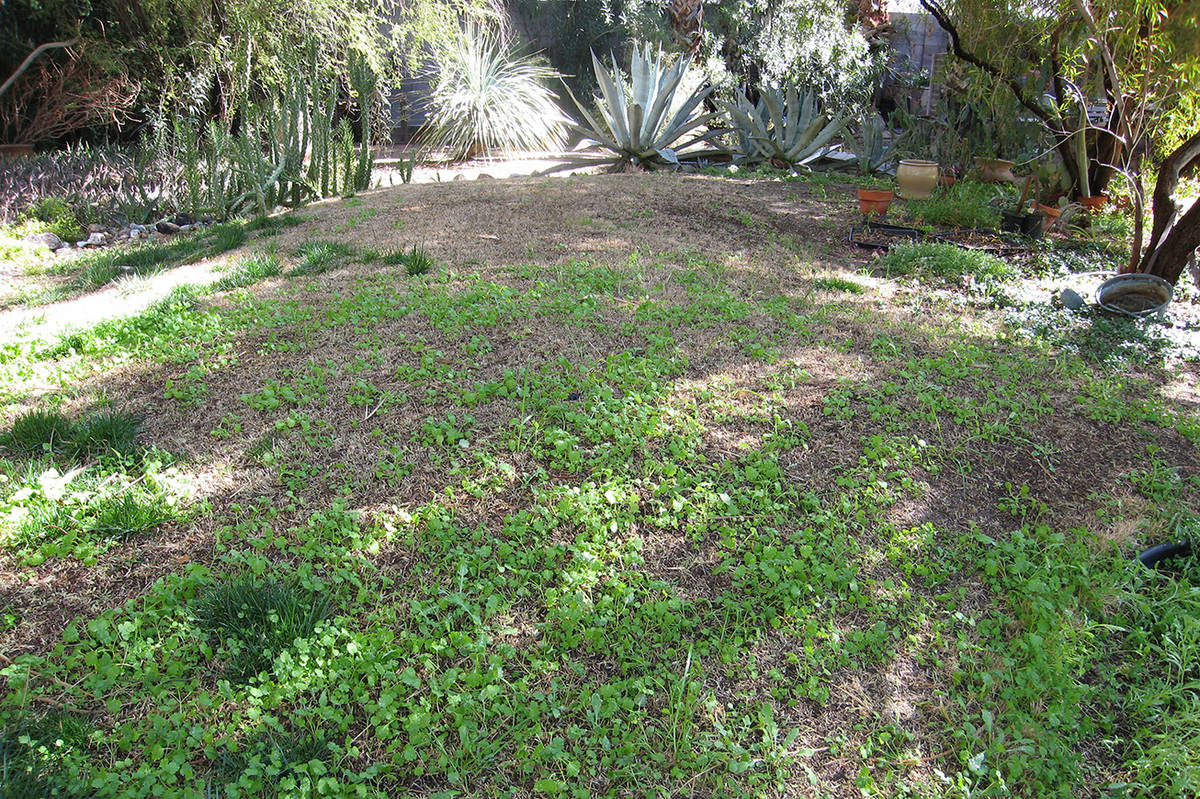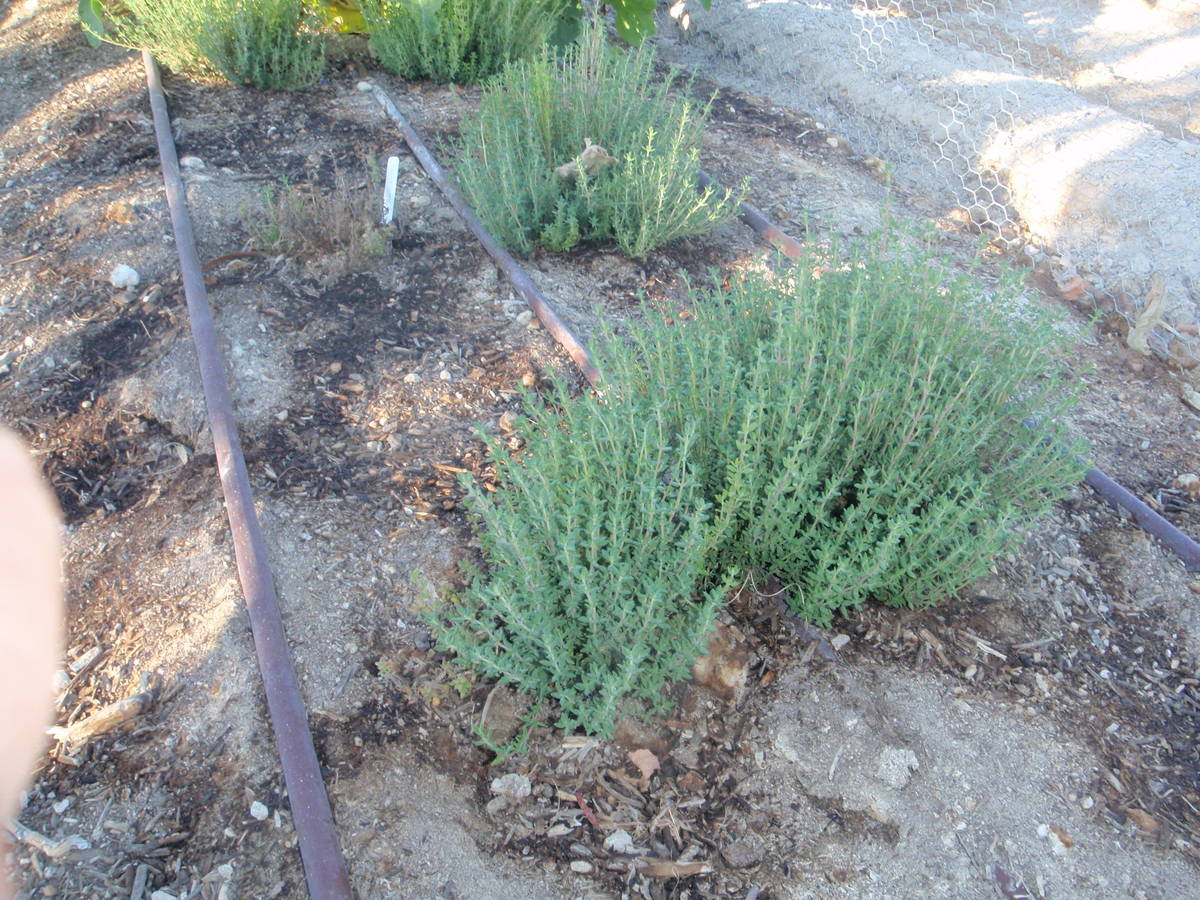What is the best way to control weeds n Las Vegas?
Weed control is the No. 1 pest problem for farmers. Pests include insects, diseases and weeds, not just insects.
More money is spent by farmers on controlling weeds than controlling or preventing insects and diseases combined. Once weeds are entrenched — either annuals by seed or perennials by stolons or rhizomes — they are more difficult to control.
Farmers mostly use cultivation and weed control chemicals. Basically, weed control chemicals save farmers money they would otherwise spend on fuel and labor.
Most of the time, homeowners are better off controlling weeds using cultivation. Oftentimes this is simply using a hoe. Make your landscape weed-free without chemicals by hoeing for 20 minutes or less, consistently, once a week.
To get good control, stay on top of weeds and control them as soon as they start growing. That means getting rid of weeds weekly, very soon after they are seen.
Weeds are not like most insects or diseases; when the weather changes, their population increases or decreases. When temperatures get warmer, summer weeds grow faster and stronger.
Weeds love to invade disturbed soils. That’s why during the first few months in new landscapes many weeds grow near plants getting water, weed barriers or not. That’s normal.
Get out your hoe. The first weeds to grow are annual weeds. They grow quickly from seed and try to cover as much soil as possible. Once they are removed when young, they are gone forever. All annual weeds come from seed whether they appear in the spring (summer annual weeds) or fall (winter annual weeds).
When preparing the soil for a garden, the first plants seen are annual weeds, usually within one to three days after cultivating and planting just before vegetables emerge from the seed. Most of their energy forces new top growth. They want to grow quickly, become large and cover as much of the soil as possible. This, and their flowers/seed, is how they spread.
These weeds are called invaders. You can use weed barriers, 3 to 4 inches of mulch on the soil surface, pre-emergent weed killers or you can use a hoe. Your choice.
Q: I made a huge mistake. I used a flame weeder as you suggested close to my drip emitters surrounded by wood mulch. They melted where it got hot. Sad, but now I have to repair them.
A: Flame weeders use fire from propane tanks to kill weeds. They are 100 percent organic, but they will melt plastic. Used near anything that melts or catches fire, they can bring disaster. On the other hand, it’s good for rock landscapes.
After rain, there are weeds everywhere, and the weeds that will be burnt should be small. Use flame weeders on days when there is no wind and soon after it rains or when water has wet the landscape. If the flame weeder produces enough BTU, the wet weeds won’t matter. They will die. It just takes a bit longer.
Places not to use flame weeders include wood chip mulch, near plasticlike drip emitters or tubing, on large weeds or in municipalities that don’t allow flame weeders.
Q: What is your favorite method for controlling weeds in the landscape?
A: My favorite method is to use a hoe when the weeds are small. Hoes are easy to grab and fast when controlling weeds in landscapes and raised beds. I would be done hoeing in half the time needed for mixing a chemical weed spray.
Use a hoe once a week during the growing season. My two favorite types of hoes are the hula or stirrup hoe and diamond hoe. I use a Warren hoe and triangular (onion) hoe for making vegetable planting rows. I have four or five different kinds of hoes for different purposes.
My next favorite way of controlling weeds in large areas is the fire or flame weeders. Fire weeders like the Dragon types produce enough heat to kill wet weeds. They are particularly good for burning back small or cut weeds growing in rock.
Be careful using this type of weeder if weeds are large or burst into flames. Have a hose and water available for emergencies. Some municipalities will not allow fire weeders without a permit.
Q: I see some areas in my fescue lawn that are drying out faster than the others. I’m watering nearly every day. I hate to think about how many times each day I will have to water when it gets hot.
A: Most likely you are watering this frequently because of uneven wetting of the lawn by the sprinklers. That means the pressure is too low or the sprinklers are too far apart.
Pop-up sprinkler heads should spray water from one head to the next. This is called head-to-head coverage. These pop-up type of overhead sprinklers should deliver water evenly across an area if they are outfitted with similar nozzles, it’s not windy, and if watered a total of 12 to 15 minutes each time.
Maintenance companies are notorious for “mixing and not matching” sprinkler nozzles when they are repaired. This increases the water your lawn needs. It’s a good idea to keep some spare nozzles in case they need repair. They are not expensive.
Sometimes water applications are split into three each, four- or five-minute applications about one hour apart to reduce puddling and runoff into the street. But the total number of minutes for a single application should still total 12 to 15 minutes each time.
Use a long piece of rebar pushed into the soil in several areas to judge the watering depth in the soil. The watering depth after an irrigation should be 10 to 12 inches deep in several locations.
Avoid watering at night. The best time to finish sprinkler irrigations is just before sunrise
You barely have time before the arrival of hot summer weather, so seed the lawn now. If the grass is dead in spots, cut it close to the soil with a line trimmer and apply good quality fescue seed to the soil in those spots. One pound of seed per hundred square feet is enough.
Remove any loose or dead grass when seeding. Scratch the soil surface and lightly cover the seed with a thin layer of sand or other topper and water twice a day until you see new grass. It should take four to five days in warm weather.
If this happens during the heat of the summer, leave the dead grass alone and let it cover the soil to prevent Bermuda grass and other weeds from growing from seed in those dead spots. Rake those areas starting in late September and October until you see bare soil and then seed the same way.
Q: How can you kill Bermuda grass growing in an existing fescue lawn?
A: It’s much easier to kill fescue growing in a Bermuda grass lawn than it is to kill Bermuda grass growing in a fescue lawn. Your problem is more difficult.
You will have to use chemicals if you want to correct this problem. The two chemicals are either Roundup if the Bermuda grass is growing in a few areas or spraying Fusilade if Bermuda grass is growing throughout the fescue lawn. Roundup is spot-sprayed where Bermuda grass is a problem and kills all the grass in those spots.
Roundup will be sprayed in those spots now and through the summer when you see Bermuda grass trying to get established again. And it will try.
The lawn is seeded with a good quality fescue seed in those dead spots as early as late September and through October. Until that time, the dead grass is left in place to help prevent the growth of other weeds in those spots.
Fusilade is a grass killer. It will kill all grasses at a high concentration. The concentration of Fusilade sprayed determines if it kills the Bermuda grass growing in a fescue lawn without damaging the fescue.
So spraying Fusilade at exactly the correct concentration is very important. It is best sprayed in a fescue lawn in late September or October. As a warning, it is normal to see the fescue lawn becoming yellowish after it is sprayed with Fusilade. Be sure to follow the label directions exactly.
Preventing Bermuda grass from getting established in a lawn is the most effective way to control it in a fescue lawn. Keep the mowing height above 2 inches. Mowing too short encourages Bermuda grass invasion.
Keep lawns dense and thick. Dense and thick lawns are encouraged by regularly fertilizing, mowing high and using the right kind of fertilizer. Lawns in our climate should receive fertilizer applied at least four times each year: Memorial Day, Labor Day, Halloween and Thanksgiving.
Clean mowers before they are used. A strong stream of water from a hose that cleans the blades and deck is necessary each time you mow.
Avoid line trimmers to edge a lawn. If it must be used, never cut the edge of the grass at an angle or use line trimmers around trees or sprinklers.
Bob Morris is a horticulture expert and UNLV professor emeritus. Visit his blog at xtremehorticulture.blogspot.com. Send questions to Extremehort@aol.com.
























